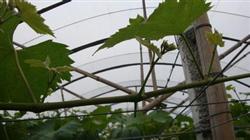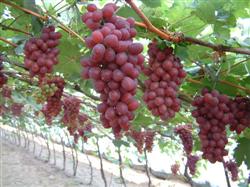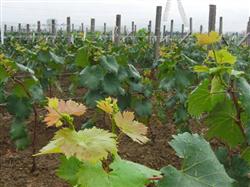Key Technical points of Grape Spring Management

Spring is the season for grape sprouting, leaf spreading, branch elongation, heading, flowering and fruiting. Strengthening the management of grape in spring can improve the yield and quality of grape. From the middle and last ten days of February to the beginning of March, the budding water was irrigated and available nitrogen fertilizer was applied. Orchards with conditions at this stage should be irrigated in time to ensure neat sprouting. At this time, when flower buds continue to differentiate and new shoots begin to grow vigorously, they need a lot of nutrients, so mature human feces and urine are mixed with 0.2% urea, and the amount of fertilizer application accounts for about 15% of the whole year. From March to late April, shoot fixing, bud wiping, flower ear treatment and disease control. After winter refurbishment, 70% or 80% of the winter buds on the mother branch usually germinate, so attention should be paid to leaving buds at this time. Leaving too many buds is easy to waste nutrients, and the tree is weak, which is not conducive to fruit setting; but if there are too few buds, it is easy to promote the vigorous growth of branches and vines, which is easy to fall flowers and fruits, so we should pay attention to wiping buds and fixing shoots. Wiping buds: usually when multiple buds germinate on a fruiting mother branch, leave one bud every 15 to 20 centimeters, leaving 2 or 5 new shoots on each fruiting mother branch, and the rest are erased from the base. When wiping buds, generally erase the non-flowering spike buds or weak buds in the double buds, leaving only one tip in each bud eye. In order to ensure the yield, when the new shoot grows to 4 or 5 leaves, it can be decided according to whether the first roll of silk has a spike or not, but it is a waste of nutrients. Fixed shoot binding vine: the retained new shoot leaves 5 leaves above the flower ear before flowering, while the non-flowering leaves 8 leaves to pick the heart. After coring, a large number of secondary shoots germinated, leaving only 1 or 2 secondary shoots at the top and 2 leaves to pick the heart repeatedly, and the rest of the secondary shoots were all erased. At the same time, tie the vine at the right time according to the growth of the vine. Treatment of flower-fruit ear: in order to ensure the fruit-setting rate, the tip of flower ear 1-stroke-5 was usually removed by manual method, and 0.3% boron fertilizer and 0.5% urea were sprayed at flowering stage. Five days after flowering, the fruit trees with more fruit were thinned artificially and then bagged to protect them.
- Prev

Light Control Technology of Grape cultivation in greenhouse
For grapes cultivated in greenhouse, because the light intensity in the greenhouse is often less than 70% of that outside, it has a significant adverse effect on the growth and fruit of grapes, often resulting in serious flower and fruit drop, poor fruit coloring, low sugar content, poor flower bud differentiation and so on. The yield and quality of grapes are greatly reduced. Therefore, it is enhanced.
- Next

Field management needs to be strengthened after grape harvest.
As the tree is weak after grape harvest, the field management should be strengthened to improve the cold resistance of the plant in winter and promote the growth of new branches in the following year. Pruning Qingyuan on the basis of summer pruning continues to do a good job of heart-picking and branching, removing tendrils and thin branches, and removing diseased leaves, so as to reduce nutrient consumption and promote full bud eyes. At the same time, remove weeds from the garden.
Related
- Moge, come on! The staff of the peasant association in the producing area of cantaloupe were frightened when the crowd gathered.
- Causes and Solutions of low Fruit setting rate of Apple
- Symptoms and control measures of passion fruit virus disease
- Fruit growing lesson: how do apple orchards keep high yields?
- Can you build orchards in the mountains? What are the pros and cons?
- How to manage the coloring period of Crisson grape?
- This paper introduces the processing technology of two kinds of fig products.
- How much is a month for retired teachers in rural areas by 2020?
- How can strawberry planting increase sugar content? We should pay attention to management in many aspects.
- What are the cultivation techniques on how to improve the yield of golden fruit?

